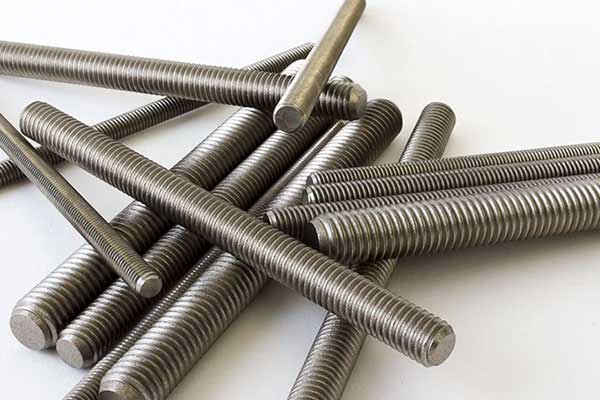
Alloy 20 Threaded Bars is a nickel-iron-chromium-based, austenitic with excellent corrosion resistance in chemical environments containing sulfuric acid and many other aggressive media. Alloy 20 Threaded Bars are stabilized with niobium to resist intergranular corrosion. This Alloy may provide potential cost savings compared to higher nickel-based alloys while outperforming standard stainless steels.
Industries and Applications of Alloy 20 Bars
Alloy 20 Bars are used in various industries, including chemical processing, petrochemical and refining, marine, pharmaceutical, & food processing. End-use applications include storage tanks, mixing tanks, agitators, pump and valve parts, food processing equipment, fasteners, and fittings. It is also essential to determine if corrosion resistance can be achieved within the given environment.
Advantages of Alloy 20 Threaded Bars
Resistance to Corrosion
Threaded Bars have excellent resistance to sulfuric acid. Additionally, this Alloy has the amount of preparation for nitric acid, phosphoric acid, and aqueous salt solutions. Because of its resistance to pitting and crevice corrosion, alloy 20 is a fantastic choice when chloride stress corrosion cracking is a concern.
Easy to weld
Threaded Bars are easily weldable, thus making the work of welders easy. They remain intact while being welded, and less surface adhesion results. Moreover, to weld alloy, 20 less expertise is needed. So, less skilled welders can be hired, thus reducing the cost of work.
Adaptable
This Alloy is valuable because it can be used in various climates and atmospheric conditions. There is no need to wait till a temperature is appropriate to begin production.
Versatile
Alloy 20 is a versatile product such as wire, plate, and flat bars made from this. Moreover, valves, fasteners, and fittings can also be made.
Strong
Alloy 20 bars are most robust than any other bars in the market. Thus, they are suitable for applications where high strength is desirable.

